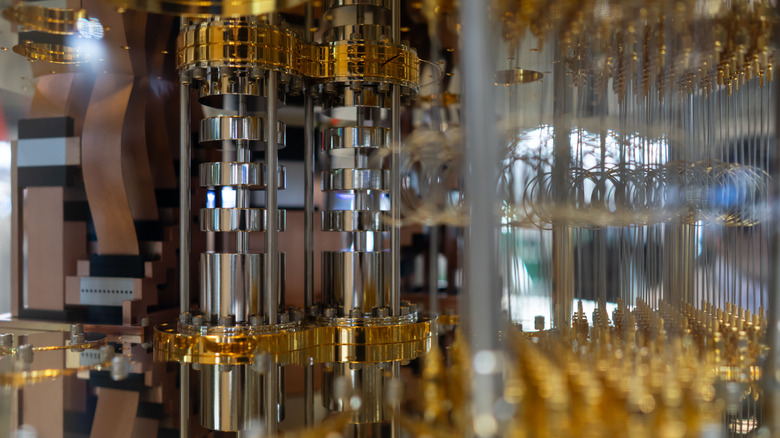This Quantum Computer Just Made Teleportation A Reality
Teleportation is a reality in 2025 — well, at least for quantum computers. In February 2025, Oxford University demonstrated the teleportation of quantum data from one independent quantum processor to another via quantum entanglement, a feat that had never been done before. Quantum entanglement isn't a new idea for scientists, though, and it was already a proven concept before. The purpose of the Oxford team's experiment was to demonstrate a practical application, showing that the theory of teleporting logic or data between two quantum computers using entanglement was feasible in reality.
Prior experiments conducted by the team included transferring a quantum algorithm (Grover's algorithm) between two quantum processors by programming and entangling them together to execute operations as a single unit. This achievement marks the first instance of teleportation between fully functional quantum computers rather than just single particles. This could completely transform how we transfer data and the internet itself by creating super-powerful linked systems, essentially evolving into a future quantum internet. But before we get into that, what is quantum computing exactly, and what does teleporting data really mean?
What is a quantum computer, and how does entanglement work?
There are two distinct differences between a normal desktop or laptop computer and a quantum computer like the one in New York, and it all boils down to how they store and process information. Normal computers use bits, which are a series of 0s or 1s that serve as the fundamental binary system for all digital technology. Every app, video, or game is just patterns of bits flipping on and off. Quantum computers, on the other hand, use quantum bits (qubits), which can be both 0 and 1 at the same time, referred to as superposition, until they are measured. Think of it like a coin spinning in the air, which is both heads and tails until it lands on a surface.
The special thing about qubits is that they can become entangled, meaning their states are linked. When the state of one is measured and it shows either 0 or 1, it instantly dictates the state of the other, no matter the distance. For example, imagine two dice that always show the same number, even if one is across the room. The entanglement between the computers allows the qubit in the first computer to be entangled with a qubit in the second computer, forming a link that lets the quantum state be reconstructed elsewhere.
Did teleportation really take place?
During the quantum teleportation process, scientists measure the first qubit's state in a specific way. That measurement is combined with signals sent to the second computer, allowing the second qubit to take on the same state. Even though the information in the first qubit is technically destroyed and re-created in the second, scientists use the term "teleportation" anyway. This is different from typical wireless signals, which physically travel from one device to another, still carrying their 0s and 1s. These signals may be fast, but they are still limited by distance and obstacles that get in the way. They can also be hacked and must be paired or connected through a network.
In the Oxford teleportation demonstration, no physical material transfer happened between the computers. The first qubit's state disappeared in one place and reappeared in another via entanglement. It is important to note that even though no particle carrying the original qubit's state actually traveled, the scientists still needed to measure the first qubit and send regular (classical) signals so the second qubit could recreate the same state. The best part is that if someone tries to eavesdrop or attempts to intercept an entangled link, they'll disturb the quantum state and be detected. Successfully teleporting quantum data is a major breakthrough in science because of the implications it could have on our future, paving a way for quantum computers to be 20,000 times faster than conventional computers, work together seamlessly anywhere in the world, and create more secure networks that lay the foundation for a true quantum internet.


